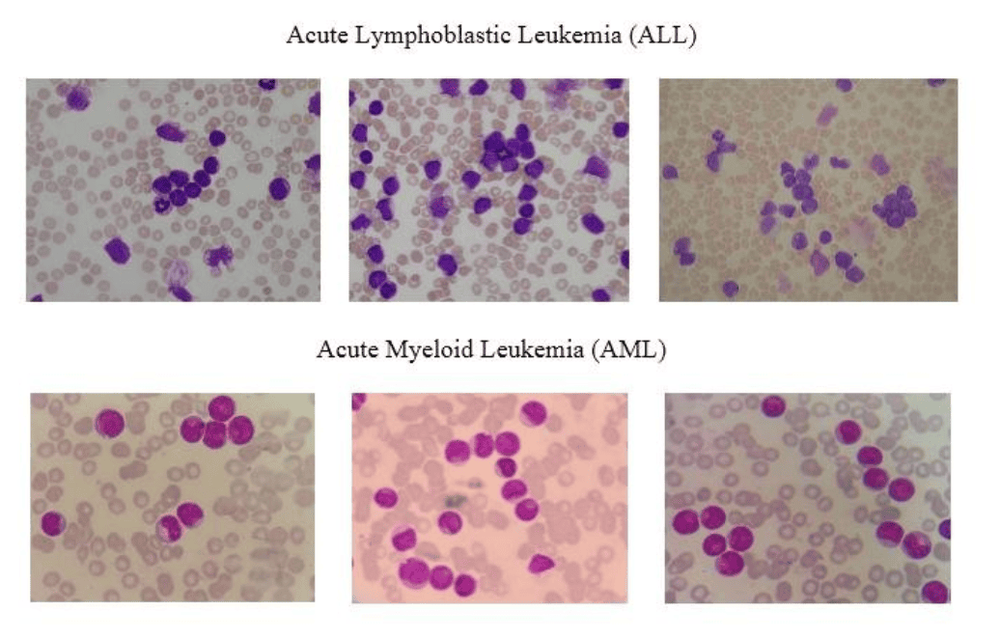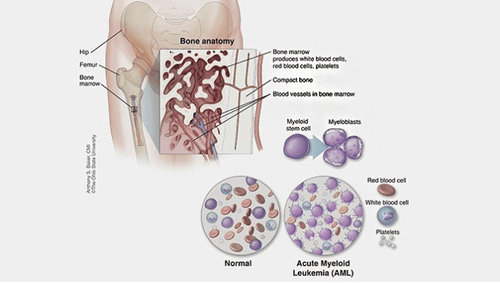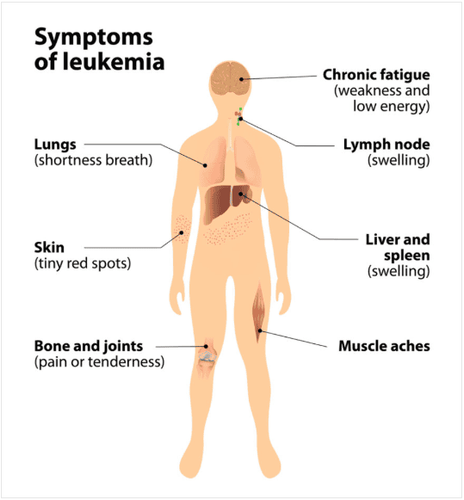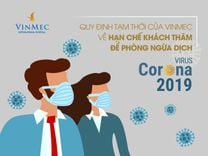Bài viết bởi Bác sĩ Yi Hyeon Gyu - Trưởng Đơn nguyên Huyết học và Trị liệu tế bào, Bệnh viện Đa khoa Quốc tế Vinmec Times City.
What is acute lymphoblastic leukemia?
Acute lymphoblastic leukemia (also called ALL) is a type of blood cancer. ALL is fast-growing and needs to be treated quickly. Blood is made up of different types of cells. These cells are made in the center of your bones, in a part called the bone marrow. When people have ALL, their bone marrow makes abnormal blood cells instead of normal blood cells. These abnormal blood cells grow out of control, get into the blood, and travel around the body. Sometimes, these cells collect in certain parts of the body.
What are the symptom and sign of acute lymphoblastic leukemia?
When the bone marrow makes abnormal blood cells, it does not make the normal blood cells a person's body needs. This can cause symptoms which can be shown in other types of acute leukemia.
The most common symptoms of ALL include feeling very tired and weak, bleeding or bruising more easily than normal, and getting sick from infections more easily than normal.
●Neutropenia (low numbers of neutrophils) – Neutrophils are a type of white blood cell that helps to fight infection. People with neutropenia are more likely to get infections. So the patient can experience symptoms of infection frequently such as fever, cough, or sputum.
●Anemia (low numbers of red blood cells) – Red blood cells circulate in the blood vessels and carry oxygen to our tissues. People without enough red cells may be pale and are often tired and short of breath.
●Thrombocytopenia (low numbers of platelets) – Platelets are small cells in the blood that help to prevent and stop bleeding. People with low platelets have bleeding and spontaneous bruising.
The diagnosis of ALL is made by blood tests and bone marrow biopsy with special molecular genetic tests.

How can we treat acute lymphoblastic leukemia?
A number of chemotherapy medications are effective against ALL. The goal of treatment is to kill the malignant cells without damaging the residual normal bone marrow cells. Treatment of ALL depends upon many factors including age, other combined disease, blood and bone marrow tests results and so on. The usual treatment of ALL is divided into three phases: induction of remission, consolidation/intensification therapy, and maintenance therapy.
INDUCTION OF REMISSION
During this part, people generally stay in the hospital and get chemotherapy. Chemotherapy is the medical term for medicines that kill cancer cells or stop them from growing. Depending on the specific type of ALL you have, you might also get other treatments. For example, "immune therapy" works with your body's infection-fighting system to kill cancer cells. "Targeted therapy" involves medicines that work only for cancers with certain characteristics.
Most people are in "remission" after getting chemotherapy. This means that doctors do not see any more abnormal ALL cells in the blood or bone marrow. But even though doctors do not see any abnormal cells, there are still ALL cells in the body. To kill these cells and prevent the ALL from returning, people need more treatment.
CONOLIDATION/INTENSIFICATION
The second part of treatment is called "consolidation/intensification therapy" and lasts a few months. During this time, people generally have more chemotherapy. But it is given at a lower dose than the earlier chemotherapy, and you might not need to stay in the hospital overnight.
MAINTENANCE THERAPY
The third part of treatment is called "maintenance therapy" and might last 2 or 2 1⁄2 years. During maintenance therapy, people get chemotherapy once a month. They also take other medicines (pills) on certain days of the month. Many people are able to return to their usual activities during this part of treatment.
TRANSPLANTATION
Allogeneic (given from other person) hematopoietic stem cell transplantation can be recommended for the patients with the factors indicating poor clinical outcomes by chemotherapy only, or when disease is relapsed after chemotherapy. Transplantation replaces cells in the bone marrow that are killed by chemotherapy or radiation with "donor" cells. These donor cells can come from:
- People who are related to you, and whose blood matches yours
- People who are not related to you, but whose blood matches yours
- Blood (that matches yours) from a newborn baby's umbilical cord
Because transplantation is very complicated and has serious side effects which sometimes result in mortality, patient and attending physician should have enough and careful discussion before transplantation decision.
-Based on UptoDate

AML affects myeloid cells in the bone marrow.Anthony Baker, CMI © The Ohio State University Comprehensive Cancer Center – James Cancer Hospital and Solove Research Institute







